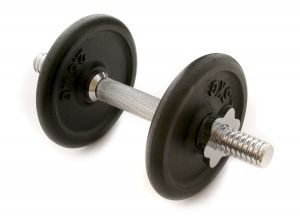
Exercise is a key ingredient to maintaining a healthy and active lifestyle. To date, over 43.1 million health conscious men and women from ages 24-55 are active members in health clubs, with another 64.9 million occasional “part-time” users. There is an increasing awareness of the importance of an adequate exercise program; unfortunately, annual weight training injuries continue to rise as well. By adopting approved, “common-sense” weight training practices and procedures, common weight training injuries can be greatly reduced or even eliminated.
Common Weight Training Injuries
According to the American Journal of Sports Medicine over 970,000 serious weight training injuries were reported between 1990 and 2007, amounting to over 6,000 reported cases per year. With 82% of weight training injuries male, the largest increasing annual percentage of weight training injuries were experienced by women. With overexertion from lifting to pulling and improper use of various weight training machines an apparatus, the most common reported weight training injuries are:
- Muscle pulls and strains.
- Back sprains and strains including herniated disks.
- Sprained ankles.
- Shoulder injuries, torn rotator cuffs.
- Knee injuries.
- Shin splints.
- Patellar Tendinitis (inflammation of tissues between kneecap and shinbone)
- Wrist sprains including dislocations.
More serious weight training injuries range from broken bones to hospitalization, and may require surgery.
Preventing Weight Training Injuries
As is often stated, “An ounce of Prevention is worth a pound of Cure.” Where physical strength and attributes vary from individual to individual, “common sense” remains a key factor in the prevention of weight training injuries. From novice to expert, weight training injuries can be prevented by following basic, common sense procedures which include:
- Warm-up periods. Ride an exercise bike, jump rope or jog in place for 5-10 minutes prior to weight lifting to loosen up muscles and joints and gradually increase heart rates to recommended levels.
- Stretching. Stretching prior to weight lifting allows for increased flexibility, reducing the risk of tight and sore muscles
- Ease into it. Start slowly with gradual build-up of intensity and frequency.
- Listen to your body. The “no-pain, “no-gain” approach dramatically increases the chances of weight training injuries.
- Cool-down periods. Walking for 5-10 minutes after a weight lifting session brings heart rates back to normal
- Frequency. Allow the body to rest 1-2 days a week. Overexertion is one of the primary causes for common weight training injuries.
- Partner-up. Weight training alone is not advised in health clubs or in-home gyms.
Treatment of Weight Lifting Injuries
Consultation with a licensed physician – including a complete exam – is strongly recommended before considering a rigorous and continual weight training program. If you have already been injured while lifting weights, Preferred Spine and Rehab offers a variety of weight lifting injury treatments, including physical therapy and rehabilitation. We have been treating residents of Fairview Heights, Swansea, O’Fallon, Belleville, Shiloh, Collinsville, and the surrounding Metro East Illinois communities since 1995. Using the head before the body is the beginning to a healthier lifestyle free of pain from common weight training injuries.
